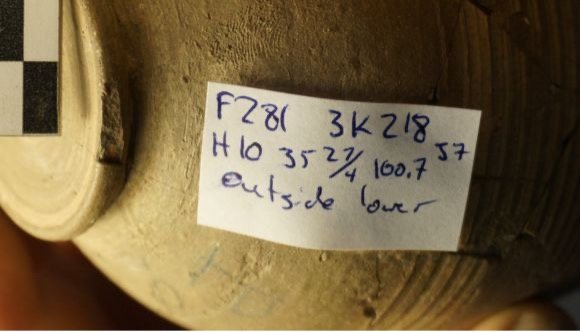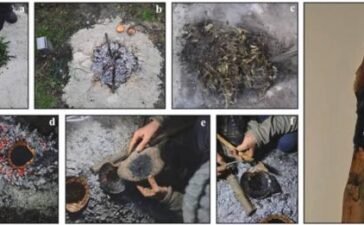New research from Syria’s Tel Hama, a town at the edge of the Ebla Kingdom, shows that 4,500-years-ago, at the time of the Early Bronze Age, two-thirds of the pottery was made by children, starting at the ages of seven and eight! The ancient craft and other kinds of industrial enterprises used child labor practices, showing a historical continuity between relatively modern industrial practices, and those far predating industrial times.
The team of archaeologists from Tel Aviv University and the National Museum in Copenhagen conducted a detailed analysis of 450 pottery vessels from Tel Hama. This research was supported by the Independent Research Fund Denmark as part of the project titled ‘Ordinary Lives in Extraordinary Times: A New Perspective on the Earliest Urban Societies in Bronze Age Syria.’

Goblets (top) and miniature vessels (bottom) from Hama Period J. (Stephen Lumsden/National Museum of Denmark/Childhood in the Past)
Child Labor in Ancient Syria: Product of Shifting Demographics
The Ebla Kingdom remains one of Syria’s most significant kingdoms during the Early Bronze Age, around 4,500 years ago. They’ve published their finds in the latest publishing of Childhood in the Past: An International Journal. The biggest takeaway is a rare glimpse into childhood in one of the world’s earliest urban societies.
Dr. Akiva Sanders, a Dan David Fellow at Tel Aviv University’s Entin Faculty of Humanities, led the research. One of the key methods used in the study was the analysis of fingerprints left on the pottery. Since fingerprints remain consistent throughout a person’s life, researchers were able to estimate the size of the palm, and consequently, the age and sex of the individuals who made the pottery. This technique revealed that most of the pottery was created by children.
“Our research allows us a rare glimpse into the lives of children who lived in the area of the Ebla Kingdom, one of the oldest kingdoms in the world. We discovered that at its peak, roughly from 2400 to 2000 BC, the cities associated with the kingdom began to rely on child labor for the industrial production of pottery. The children worked in workshops starting at the age of 7, and were specially trained to create cups as uniformly as possible—which were used in the kingdom in everyday life and at royal banquets,” provided Dr. Sanders in a press release.
This set of pottery was excavated in the 1930s, preserved by the National Museum of Denmark. The remaining third created was likely made by older men. This finding suggests a significant reliance on child labor in the pottery production process in the ancient city.
During the Early Bronze Age, the rise of the world’s first city-kingdoms in the Levant and Mesopotamia led researchers to explore how urbanization and the centralization of government functions influenced industries like pottery-making, explained Dr. Sanders.
Resistance to Forced Labor: A Childlike Expression of Creative Resistance
The town of Hama, a major center for ceramic production, initially showed a broad range of ages among the potters, with many between 12 and 13 years old. Half of the potters were younger than 18, and boys and girls were equally involved in the trade. After the establishment of the Kingdom of Ebla, this demographic altered significantly: potters began to focus more on producing goblets for banquets. As alcohol-fueled feasts became more common, the demand for cups rose sharply, since the cups were frequently broken and needed to be replaced.
The kingdom turned to child labor to meet this demand, training children to create standardized, uniform cups. This situation mirrored patterns seen during the Industrial Revolution, where child workers were often trained to perform specific repetitive movements to ensure consistency in production! The ability to control and train children in these tasks made them an attractive labor source for mass production, reports Arkeonews.
Much to their surprise, this was not all a Dickensian tale of exploitation and misery: the children in Tel Hama found moments of creative expression outside the workshops. They made small figurines and miniature vessels for their own amusement, teaching each other how to craft these items without adult supervision.
“These children taught each other to make miniature figurines and vessels, without the involvement of the adults. It is safe to say that they were created by children—and probably including those skilled children from the cup-making workshops. It seems that in these figurines the children expressed their creativity and their imagination,” concludes Dr. Sanders.
Top image: Pottery vessel made in Tel Hama, including child’s fingerprint, which is evidence of child labor in ancient Syria. Source: Tel-Aviv University
By Sahir Pandey






